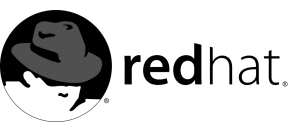

Chapter 4.
Boot Loaders
Before Red Hat Linux can run on a system, it must be started by special program called a boot loader.
The boot loader program usually exists on the system's primary hard drive or other media device and
is responsible for loading the Linux kernel its required files, or, in some cases, other operating systems
into memory.
4.1. Boot Loaders and System Architecture
Each system architecture which can run Red Hat Linux uses a different boot loader. For example, the
Alpha architecture uses the
aboot
boot loader, while the Itanium architecture uses the
ELILO
boot
loader.
This chapter discuss commands and configuration options for the two boot loaders supplied with Red
Hat Linux 8.0 for x86 architecture: GRUB and LILO.
4.2. GRUB
GNU GRand Unified Boot loader or GRUB is a program which enable the user to select which in
stalled operating system or kernel to load at system boot time. It also allows the user to pass arguments
to the kernel.
4.2.1. GRUB and the x86 Boot Process
This section will discuss in more detail the specific role GRUB plays when booting an x86 system.
For a detailed look at the overall boot process, see Section 3.2.
GRUB loads itself into memory in the following stages:
1. The Stage 1 or primary boot loader is read into memory by the BIOS from the MBR
1
. The
primary boot loader exists on less than 512 bytes of disk space within the MBR. The only thing
it does is load the Stage 1.5 or Stage 2 boot loader.
2. The Stage 1.5 boot loader is read into memory by the Stage 1 boot loader only if necessary. Some
hardware requires an intermediate step to get to the Stage 2 boot loader. This is sometimes true
when the
/boot
partition is above the 1024 cylinder head of the hard drive or when using LBA
mode. The Stage 1.5 boot loader is found either on the
/boot
partition or on a small part of the
MBR and the
/boot
partition.
3. The Stage 2 or secondary boot loader is read into memory. The secondary boot loader displays
the GRUB menu and command environment. This interface allows you to select which operating
system or Linux kernel to boot, pass arguments to the kernel, or look at system parameters, such
as available RAM.
4. The secondary boot loader reads the operating system or kernel and
initrd
into memory. Once
GRUB determines which operating system to start, it loads it into memory and hands control of
the machine to that operating system.
The boot method used to boot Red Hat Linux is called the direct loading method because the boot
loader loads the operating system directly. There is no intermediary between the boot loader and the
kernel.
1. For more on the system BIOS and the MBR, see Section 3.2.1.
footer
Our partners:
PHP: Hypertext Preprocessor Best Web Hosting
Java Web Hosting
Inexpensive Web Hosting
Jsp Web Hosting
Cheapest Web Hosting
Jsp Hosting
Cheap Hosting
Visionwebhosting.net Business web hosting division of Web
Design Plus. All rights reserved

